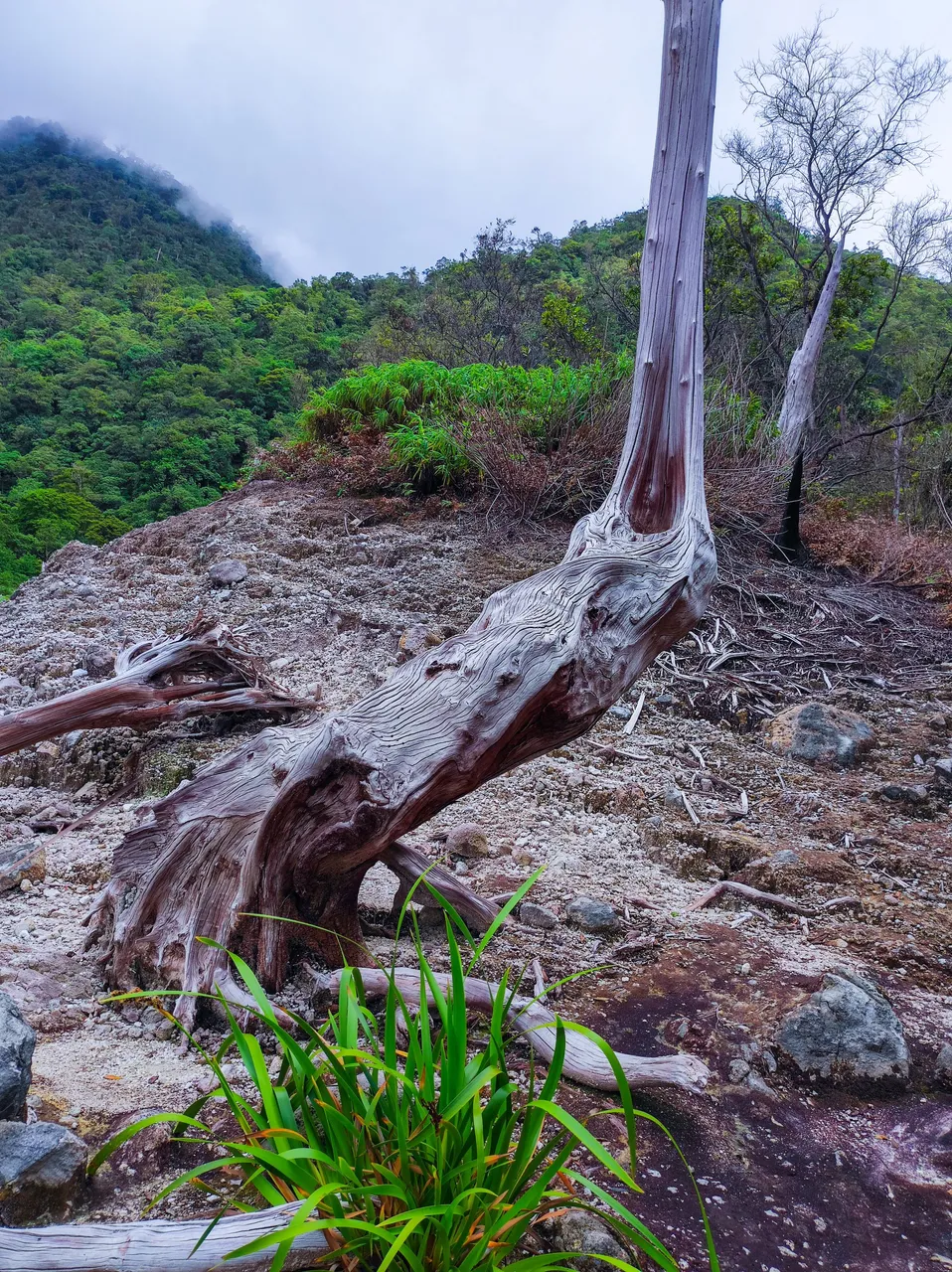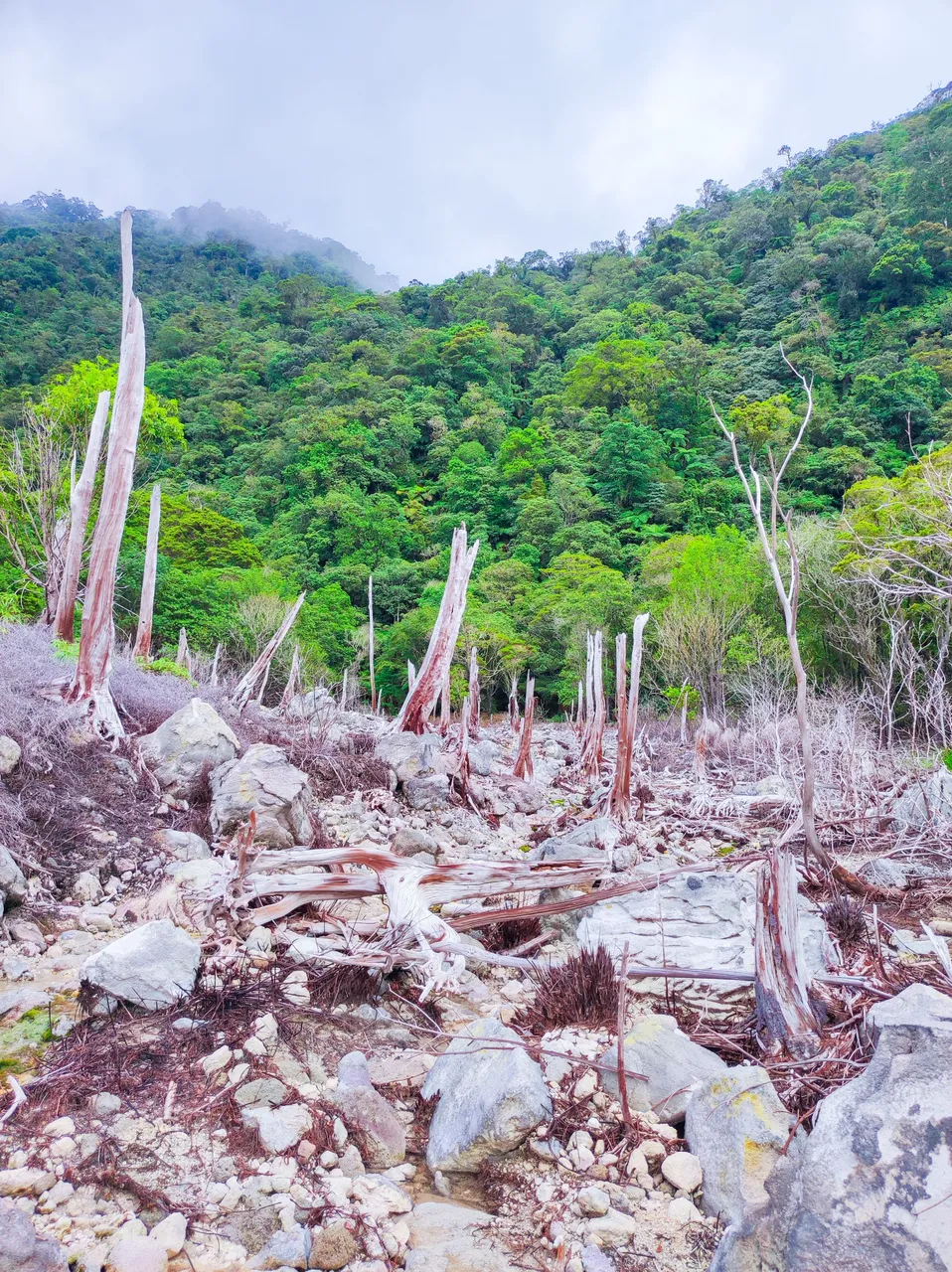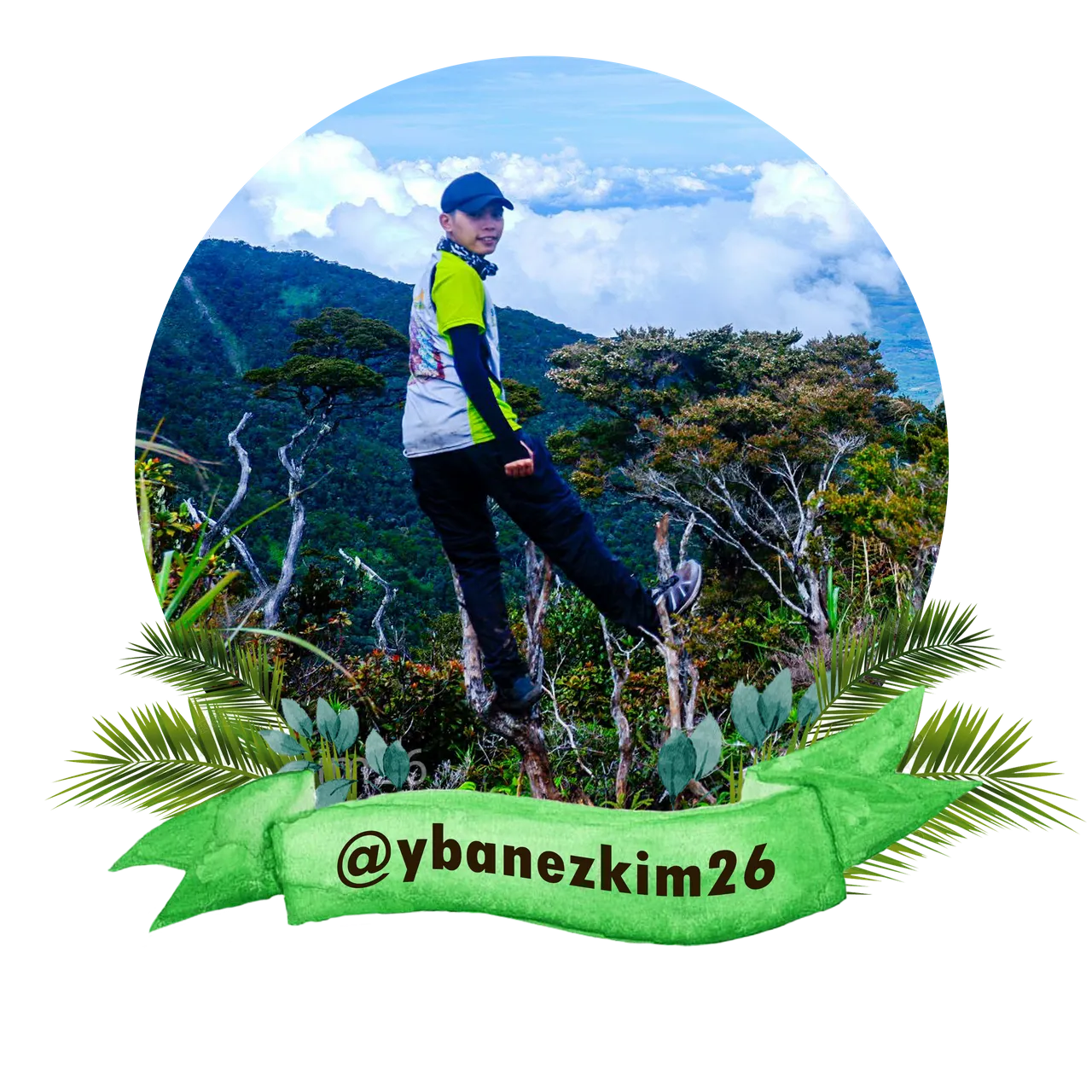
Hello everyone!
I already posted about my climb to Mt. Talinis about two years ago. It was a dream come true for me because I was finally able to reach the peak of the highest mountain in the place where I grew up. In that post, I made a promise to share all the details of the climb and it's time to fulfill that promise even if it's two years late.
This time, I want to share about Kaipuhan Sulfur Vents. It's a nature preserve in Valencia, Negros Oriental, Philippines. Located near Mt. Talinis, it's just a few meters away from Rancho Campsite. If you climb Mt. Talinis via Apolong Trail, it's usually a three-day hike of moderate difficulty, with Rancho Campsite as the stop and campsite on the first day. Some would hike Mt. Talinis for just two days, but we wanted to make our experience as enjoyable as possible. So, we stopped at the Ranger Station and took a refreshing splash in the waterfalls nearby.

The first day was relatively easier compared to the second and third days. Since it was still early when we reached the campsite, we decided to visit the Kaipuhan Sulfur Vents before pitching our tents and settling for the night. Some in the group decided to stay longer at the waterfalls, so they opted to just pass by the sulfur vents the next day.


It was slightly drizzling and we already felt the cold associated with the elevation, but as we were nearing the nature preserve, we were greeted by the slightly warm and overly humid air mixed with the stench of rotten eggs. The first change in flora in the area was from a forest to a "grassland" with only one type of grass, its leaves resembling those of pandan (Pandanus amaryllifolius).

You’ll know you’ve reached the sulfur vents when you see a stream that looks barren from afar, but the water is full of green algae. Since the stream comes from a cold spring somewhere in the mountain and passes through the sulfur vents, the hot and toxic waters from the vents are mixed with the cold spring water. The resulting confluence is rich in minerals that are suitable for the green algae.
 |  |  |
|---|
The reason I called it the realm of life, death, and destruction is because of the nature of the vents itself. It might look like it's fixed in one location, but it's not. The vents are moving, but it might take years before the changes are noticeable. The movement of the vents has created the landscape. The strongest evidence is the stumps and dead wood in the area. They indicate that it was once a lush forest before the vents moved into that location.

I think the vents started at one face of the mountain and then moved downward until it reached the current location which is a relatively flat area. This is evidenced by the overgrown area in one side of the forest, where the species of trees and plants are very much different compared to the rest of the surrounding mountains. There are also dead trees in that part of the forest.


I was just amazed by the raw beauty of nature. Where the vents move, for sure nothing will live in that part of the mountains except extremophiles, or bacteria and microorganisms that thrive on extreme conditions like high temperature and acidity. What's left in the trail of the vents will be taken over by other specialist species that thrive in poor soil or mineral-rich deposits. So, it's just a cycle of life and death.


Just imagine, those holes above are boiling hot and acidic. They're bubbling and laden with sulfur and its acid derivatives. The fumes are sulfur dioxide, characterized by the rotten egg smell. But somewhere downstream, algae and some plant species thrive.


The shifting vents carve out a shifting terrain where life, death, and rebirth are in dramatic display. The whole nature preserve is a perfect example of how even the harshest environments can nurture unique ecosystems. Also, because of its location deep within Mt. Talinis, it's not overrun by tourism. Only the hikers and mountain climbers are rewarded by such beauty on their way to the summit.


I would say that this hike will forever be etched in my memory because my geek self was on fire at that time. It's the place where science, beauty, and adventure meet. While the experience was surreal, I have to constantly remind myself of the dangers and the powerful forces beneath the earth that are constantly shaping the life in the surface.


I guess that's all for this post! If you want, you can watch this video from my previous post for a more dynamic and dramatic experience. 😁

Kim Ybañez
Welcome to Kim's small corner in Hive. He is a chemical engineer by profession but a blogger by passion. He is a wanderlust and an adventure seeker. Join his quests as he visits remote destinations, climbs mountains, tries new and exotic dishes, and explores his country (The Philippines). He's also a trying-hard photographer, so stay tuned as he shares his photos and his thought process while creating them.
If you like his content, don't forget to upvote and leave a comment to show some love. You can also reblog if you want to. Also, don't forget to follow him to be updated with his latest posts.